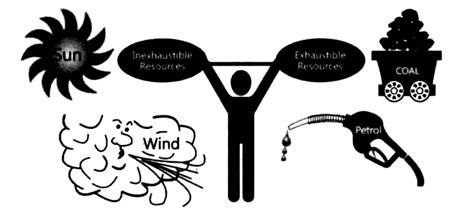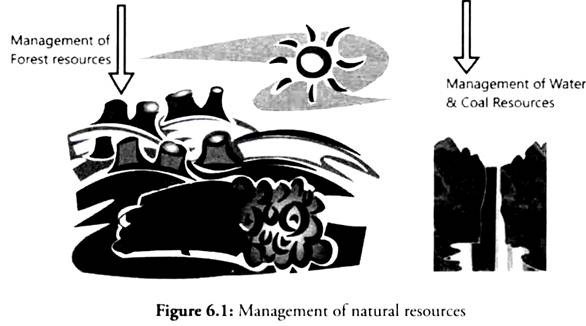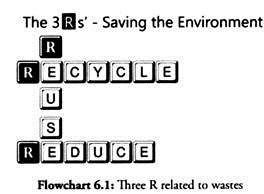Here is a compilation of essays on ‘Natural Resources’ for class 6, 7, 8, 9, 10, 11 and 12. Find paragraphs, long and short essays on ‘Natural Resources’ especially written for school and college students.
Essay on Natural Resources
Essay Contents:
- Essay on the Introduction to Natural Resources
- Essay on the Definition of Natural Resources
- Essay on the Features of Natural Resources
- Essay on the Classification of Natural Resources
- Essay on Natural Resources and Trade
- Essay on the Management of Natural Resources
- Essay on the Conservation of Natural Resources
Essay # 1. Introduction to Natural Resources:
Everything we eat, build, wear, etc. in some way comes from natural resources. These resources being available to us freely undergo massive threat of overexploitation or overuse. Since, past few decades, a global need for measures and regulations to be made to reduce the problems of pollution, overexploitation, global warming, etc. is being felt.
As a result, huge programmers are being administered by governments worldwide to stop or slow down the exploitation of resources. Though, global or national level measures are being employed; this does not in any way avoid an individual’s duty towards the better usage of resources. The air we breathe, the water in our rivers and lakes, the soils, minerals are all natural resources. Many of these resources are free gifts of nature and can be used directly.
In some cases tools and technology may be needed to use a natural resource in the best possible way. Natural resources are classified into different groups depending upon their level of development and use; origin; stock and distribution. On the basis of their development and use resources can be classified into two groups, actual resources and potential resources.
Actual resources are those resources whose quantity is known. These resources are being used in the present. The rich deposits of coal in Ruhr region of Germany and petroleum in the West Asia, the dark soils of the Deccan plateau in Maharashtra are all actual resources.
Potential resources are those whose entire quantity may not be known and these are not being used at present. These resources could be used in the future. The level of technology we have at present may not be advanced enough to easily utilize these resources.
The Uranium found in Ladakh is an example of potential resource that could be used in the future. High speed winds were a potential resource two hundred years ago. Today they are an actual resource and wind farms generate energy using windmills like in the Netherlands. You will find some in Nagercoil in Tamil Nadu and on the Gujarat coast.
Everything we study is not just pure science but a field of applied science also. What is the difference? The difference lies in the fact of its origin i.e. the pure science is all about the science that nature has given us and the applied science is what we make or use from the pure science.
For a scientist satiating his/her inquisitive side isn’t enough, there are social as well as economic issues to which a scientist should sympathize and give rational advice only after factoring these problems.
Essay # 2. Definition of Natural Resources:
Resources that are drawn from Nature and used without much modification are called natural resources. Natural resources are ‘stocks of materials that exist in the natural environment that are both scarce and economically useful in production or consumption, either in their raw state or after a minimal amount of processing’.
Most natural resources share a number of important characteristics, including uneven distribution across countries, exhaustibility, externalities (market failures in the form of unpriced effects resulting from consumption and/or production), dominance in output and trade, and price volatility.
Essay # 3. Features of Natural Resources:
i. Uneven Distribution:
Supplies of some of the world’s most vital natural resources are controlled by a small number of countries, which may be able to exercise power over markets as a result. Trade frictions may follow, although trade has the potential to improve efficiency and increase welfare by shifting resources from regions of relative abundance to the regions of scarcity.
ii. Exhaustibility:
Resources are either non-renewable (e.g. fossil fuels and metallic ores) or renewable (e.g. fish, forests and water) but even renewable resources can be exhausted if they are mismanaged. This is what makes resource management so important. In some instances, trade may contribute to the exhaustion of resources by accelerating their depletion.
The production, trade and consumption of natural resources can have negative impact on people not involved in the markets in which the relevant economic decisions are made. Trade may exacerbate or ameliorate these externalities either by increasing the rate of consumption or by promoting more efficient use of resources.
iv. Dominance in National Economies:
Resource extraction industries are sometimes responsible for an outsized share of a country’s trade and/or GDP. This is especially true for fuels, and to a lesser extent for ores and other minerals. Exports from resource-rich countries tend to be highly concentrated in few products and trade can encourage over-specialization in resource extraction. Trade can also facilitate diversification by providing access to foreign markets.
v. Volatility:
Certain natural resources, particularly fuels and mining products, can be subject to extreme price volatility. This is a source of uncertainty that adversely affects investment and production decisions. Trade can contribute to a reduction of volatility by ensuring access to diverse resource supplies.
Essay # 4. Classification of Natural Resources:
Based on their origin, resources can be abiotic or biotic. Abiotic resources are non-living while biotic resources are living. Soils, rocks and minerals are abiotic but plants and animals are biotic resources. Natural resources can be broadly categorized into renewable and non-renewable resources.
Renewable resources are those which get renewed or replenished quickly. Some of these are unlimited and are not affected by human activities, such as solar and wind energy. Yet careless use of certain renewable resources like water, soil and forest can affect their stock. Water seems to be an unlimited renewable resource. But shortage and drying up of natural water sources is a major problem in many parts of the world today.
Non-renewable resources are those which have a limited stock. Once the stocks are exhausted it may take thousands of years to be renewed or replenished. Since this period is much more than human life span, such resources are considered non-renewable. Coal, petroleum and natural gas are some examples.
On the basis of their distribution resources can be ubiquitous or localized. Resources that are found everywhere like air we breathe, are ubiquitous. But those which are found only in certain places are localized, like copper and iron ore.
The distribution of natural resources depends upon number of physical factors like terrain, climate and altitude. The distribution of resources is unequal because these factors differ so much over the earth.
I. On the basis of origin, resources may be divided into:
(i) Biotic resources that are obtained from the biosphere such as forests, animals, plants and their products. Mineral fuels such as coal and petroleum are also included in this category because, they are formed decayed organic matter.
(ii) Abiotic resources include non-living things like land, water, air and mineral ores.
II. On the basis of their stage of development, resources may be divided into:
(i) Potential resources are those that exist in a region and may be used in the future. For example, petroleum exists in many parts of the country having sedimentary rocks but it remains a potential resource till the time it is drilled out and put to use.
(ii) Actual resources are those that have been surveyed, their quantity and quality determined and are being used in present homes, e.g. wood.
III. On the basis of their availability and abundance, they are of two types:
(i) Inexhaustible:
These are in plenty and cannot be exhausted by man’s consumption, e.g., air, sunlight, wind, etc. These are affected by over-population of mankind.
(ii) Exhaustible:
These are limited and can get exhausted over a period of time i.e. coal, petroleum, etc.
(a) Renewable resources are those that can be replenished or reproduced easily. Some of them like the wind, air, sunlight, etc. are continuously available, their quantity is not affected by man’s consumption.
Some renewable resources can be depleted by human use but they can also be replenished, thus maintaining a flow. Agricultural crops take a short time for renewal, water takes a comparatively longer time while forest takes even longer time.
(b) Non-renewable renewable resources are those which are formed over very long geological periods. Minerals and fossil fuels are included in this category. As the rate of formation of fossil fuels is extremely slow they cannot be replenished once they get depleted. The metallic minerals can be recycled.
IV. On the basis of their distribution, natural resources can be divided into:
(i) Natural resources are confined to national boundaries, e.g. minerals, forests, etc.
(ii) Multinational resources are shared by more than one nation, e.g. certain rivers, migratory birds, etc.
(iii) International resources are shared uniformly by all nations, e.g. sunlight, air, etc.
Essay # 5. Natural Resources and Trade
:
Natural resources represent a significant and growing share of world trade, and properly managed providing a variety of products that contribute greatly to the quality of human life. They also present particular challenges for policy-makers.
The extraction and use of natural resources must balance the competing needs of current and future generations. The manner in which they are managed has important environmental and sustainability implications. The unequal distribution of natural resources across countries and frequent volatility in their prices are potential sources of international tension.
A number of characteristics peculiar to natural resources influence the manner in which they are traded and the nature of the rules applied to this trade. Differing international and inter-generational interests inherent in natural resources trade make transparent, predictable, well-designed and equitable trade rules particularly valuable.
Inadequate or contested rules risk stoking the fires of natural resource nationalism, where differences in power across countries and beggar-thy-neighbour motivations dominate trade policy. In a world where scarce natural resource endowments must be nurtured and managed with care, uncooperative trade policies could have a particularly damaging effect on global welfare.
Essay # 6. Management of Natural Resources:
Management of natural resources includes use of natural resources in such a way that with minimal use we get the optimum output, which vary for every resource. However, the final goal of every management is to conserve the resources for future generations.
The major concept of sustainability will be at the core while we tell you about these approaches. Air, water and land are three basic resources or home of all the resources. The survival of life exists because of all the three resources.
Essay # 7. Conservation of Natural Resources:
There are various reasons for which we should conserve the natural resources:
i. Many resources on the earth are limited. The proper management can ensure that the natural resources are used judiciously, such that, they fulfill the needs of the present generation and also are available for future generations to come.
ii. Natural resource management employs long-term approaches which stop the use of resources for short-term gains. Through this, it is ensured that the resource can be used overtime with long lasting benefits.
iii. The proper management can ensure equitable distribution of natural resources.
iv. Natural resource management will consider the damage caused to the environment during the ‘extraction’ or ‘use’ of the natural resources and find ways and means to minimize this damage.
Three R’s for Saving Environment:
The increasing pollution is a concern for all of us. But, since the problem occurs on the global scale, one might think what will happen if only we as individuals do something for it. We can also make a huge difference by using the three basic concepts of Reduce, Recycle, and Reuse.
Let us look at each one with examples:
(i) Reduce:
This indicates misuse of resources for waste and reduces the use for proper requirements. We save electricity by switching off unnecessary lights and fans. We save water by repairing leaky taps and closing the tap properly. We do not waste food.
(ii) Recycle:
This deals in collecting plastic, paper, glass and metal items and recycling these materials to make required things instead of synthesizing or extracting fresh plastic, paper, glass or metal. In order to recycle, we first need to segregate our wastes so that the material that can be recycled, is not dumped along with other wastes.
(iii) Reuse:
This is actually even better than recycling because the process of recycling uses some energy. In the ‘reuse’ strategy, you simply use things again and again. Instead of throwing away used envelopes, you can reverse it and use it again. The plastic bottles in which you buy various food-items like jam or pickle can be used for storing things in the kitchen.
Five things which one can do over a week to conserve our natural resources are:
(i) Preventing wastage of food,
(ii) Preventing wastage of water,
(iii) Preventing wastage of electricity,
(iv) Preventing usage of petroleum products,
(v) Preventing the purchase of toys that are not recycled or made of plastics.


